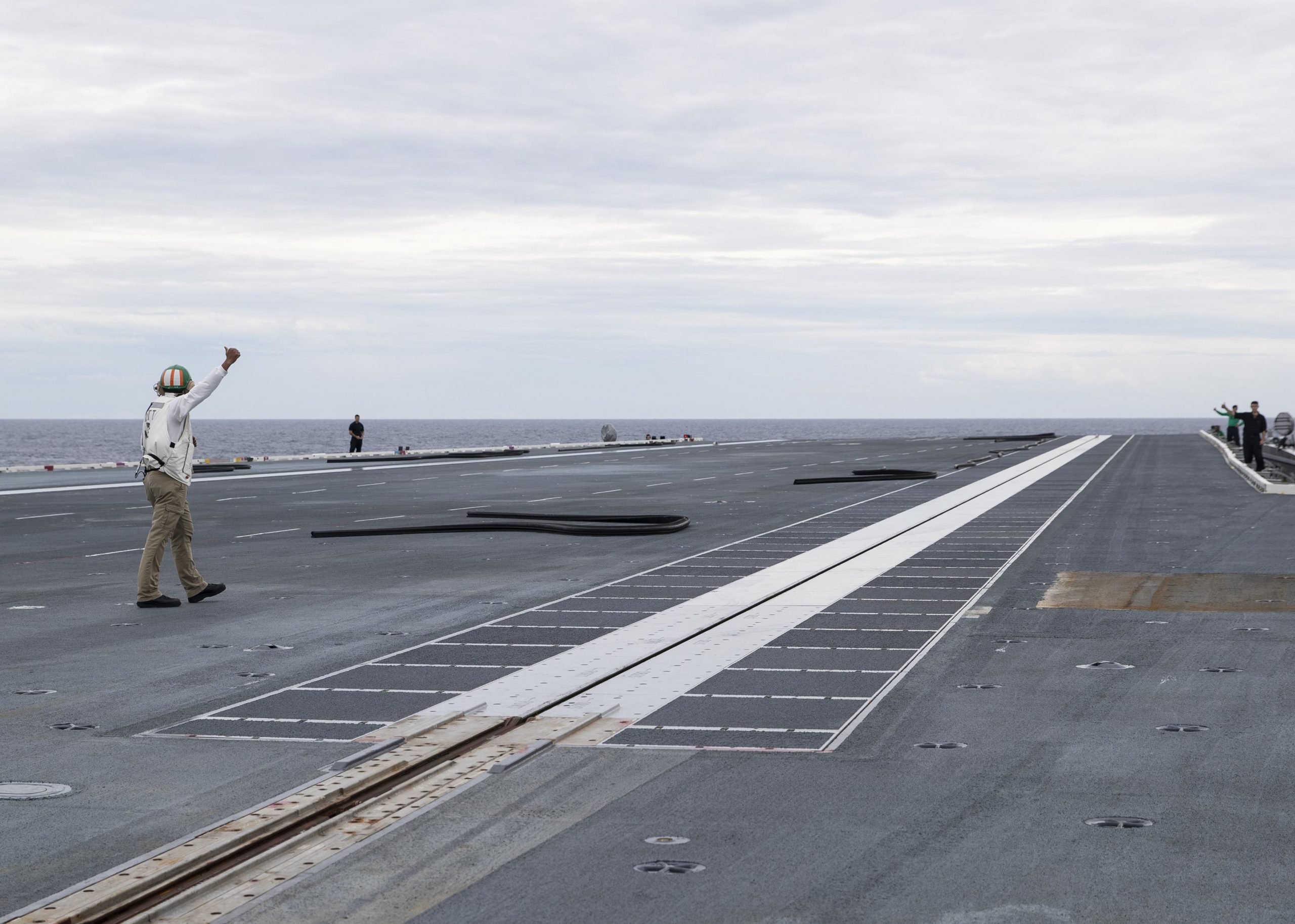By Pierre Tran
Paris – The US state department has given the green light for the sale of electromagnetic aircraft catapults and arresting gear, worth an estimated $1.3 billion, for a French next-generation aircraft carrier, the Defense Security Cooperation Agency said.
“The State Department has made a determination approving a possible Foreign Military Sale to the government of France of Electromagnetic Aircraft Launch System (EMALS),
Advanced Arresting Gear (AAG), and related equipment for an estimated cost of $1.321 billion,” the agency said in a Dec. 21 statement.
A required notification to the US Congress for the sale was delivered Dec. 21, the agency said. France has requested procurement of one electromagnetic system with two launchers and one advanced arrestor gear, in a three-engine configuration.
The Direction Générale de l’Armement was now waiting for the US Congress to approve the deal, a spokeswoman for the DGA French procurement office said.
“This is excellent news,” said navy captain Eric Lavault, spokesman for the French service. “This is what we were looking for.”
The prime contractors will be General Atomics-Electromagnetic Systems and Huntington Ingalls, the agency said. There will be no offset deal on the deal, which calls for some 40 US government officials and contractors to spend 10 weeks a year in France, from 2033 to 2038 to support installation, certification, and sea trials.
“This proposed sale will support the foreign policy and national security of the United States by helping to improve security of a NATO ally which is an important force for political stability and economic progress in Europe,” the agency said.
“The proposed sale will result in continuation of interoperability between the United States and France,” the agency said, with the electromagnetic catapults and arrestor gear to be installed on the French next-generation aircraft carrier.
“France will have no difficulty absorbing this equipment into its armed forces,” the agency said. The prospective deal includes land-based testing, installation, training, service, and spares.
From an operational view, the electromagnetic system delivers a Catapult Assisted Take-Off But Arrested Recovery (CATOBAR) capability, allowing the planned next-generation fighter and Rafale fighter jets to carry more weapons and more fuel – to fly greater distance – than fighters flying off ski-jump carriers, a French source said.
The British fleet air arm flies the F-35 fighter in its vertical and short take-off and landing (VSTOL) version. The F-35 takes the Short Take-Off But Arrested Recovery (STOBAR) approach on the ski-jump deck on the Royal Navy’s Queen Elizabeth carrier.
“You can’t compare,” the source said, pointing up the differences between the two ship designs.
There is growing interest in catapults, with China building a catapult on its third carrier, project name 003, the source said, while the Indian navy has shown interest in building a third carrier equipped with catapults, rather than the ski jumps on its first two vessels.
For the French navy, the electromagnetic catapults will allow a higher operational tempo, the source said, allowing more launches of heavy aircraft – such as a planned new fighter carrying nuclear weapons – and lighter remote carriers or combat drones. The arrestor gear will bring less stress on the aircraft landing gear.
The new fighter will be a key element of the European Future Combat Air System.
There will be continuity as the Charles de Gaulle carrier uses US-built catapults, the source said. The French fleet air arm flies the Rafale, which can carry nuclear weapons, off the nuclear-powered capital ship, which carries a US navy officer to oversee the catapults.
The testing of the electromagnetic system on the US navy’s Gerald Ford carrier meant the French service would be acquiring a “sea proven” catapult, the source said, adding that if France developed its own system, that would cost more.
The Charles de Gaulle vessel is due to retire in 2038, so the new 75,000-tonne carrier is expected to enter service around that time. The new nuclear-powered carrier is expected to carry some 30 fighters, which would combine the Rafale and the new fighter.
The new carrier will be a “strategic asset indispensable for France,” said a video produced by the French navy and the DGA.
EMALS Launch USS Gerald R. Ford, November 17, 2020 from SldInfo.com on Vimeo.
ATLANTIC OCEAN (Nov. 15, 2019) Chief Aviation Boatswain’s Mate (Equipment) Louis Mountain Jr., from Seat Pleasant, Maryland, assigned to USS Gerald R. Ford’s (CVN 78) air department, signals the electromagnetic aircraft launch system (EMALS) to launch during no load testing on the ship’s flight deck. This was the first test of Ford’s EMALS since the end of its post shakedown availability. (U.S. Navy photo by Mass Communication Specialist 3rd Class Zachary Melvin)


